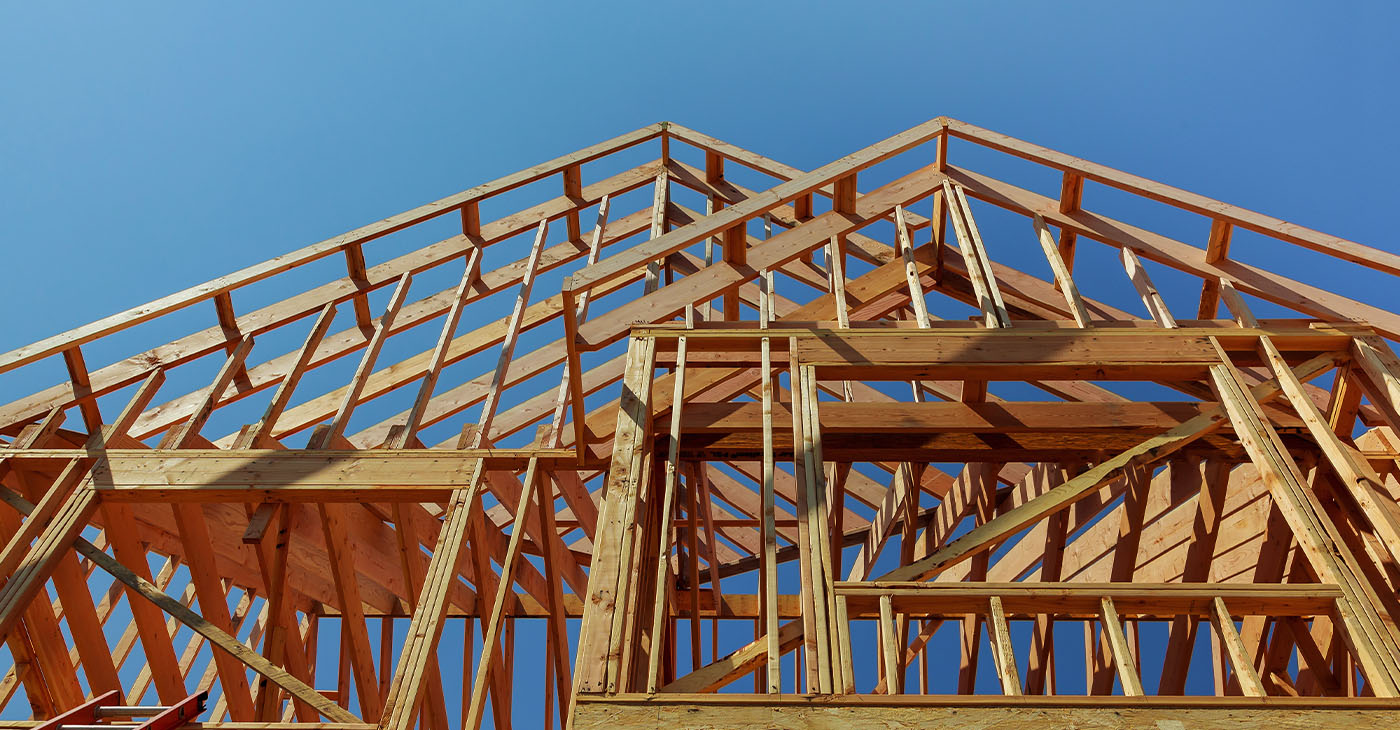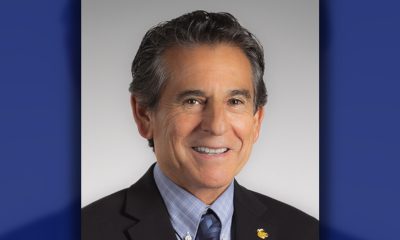Bay Area
‘Godzilla Next Door’: How California Developers Gained New Leverage to Build More Homes
It’s hard to know just how many builder’s remedy projects have been filed across the state. YIMBY Law, a legal advocacy group that sues municipalities for failing to plan for or build enough housing, has a running count on its website of 46 projects, though its founder, Sonja Trauss, admits that it’s an imperfect tally.

By Ben Christopher
CalMatters
Late last fall, a Southern California developer dropped more than a dozen mammoth building proposals on the city of Santa Monica that were all but designed to get attention.
The numbers behind WS Communities’s salvo of proposals were dizzying: 14 residential highrises with a combined 4,260 units dotting the beachside city, including three buildings reaching 18 stories. All of the towers were bigger, denser and higher than anything permitted under the city’s zoning code.
City Councilmember Phil Brock attended a town hall shortly after the announcement and got an earful. A few of the highlights: “Godzilla next door,” “a monster in our midst” and “we’re going to never see the sun again.”
“‘Concerned’ would be putting it mildly,” Brock said of the vibe among the attendees. “A lot of them were freaked.”
As it turns out, freaking locals out may have been the point.
WS Communities put forward its not-so-modest proposal at a moment when it had extreme leverage over the city thanks to a new interpretation of a 33-year-old housing law. Santa Monica’s state-required housing plan had expired and its new plan had yet to be approved. According to the law, in that non-compliance window, developers can exploit the so-called builder’s remedy, in which they can build as much as they want wherever they want so long as at least 20% of the proposed units are set aside for lower income residents.
Over the last two years, local governments across California have had to cobble together new housing plans that meet a statewide goal of 2.5 million new units by 2030. At last count, 227 jurisdictions — home to nearly 12 million Californians, or about a third of the state population — still haven’t had their plans certified by state housing regulators, potentially opening them up to builder’s remedy projects.
That gives developers a valuable new bargaining chip.
WS Communities used its advantage in Santa Monica to broker a deal in which it agreed to rescind all but one of its 14 builder’s remedy projects in exchange for fast-tracked approval of 10 scaled-down versions.
“The builder’s remedy — the loss of zoning control, the ability of a developer to propose anything, Houston-style, whatever they want, no zoning regulations — that gets people’s attention,” said Dave Rand, the land-use attorney representing the WS Communities. “The builder’s remedy can be a strategic ploy in order to potentially leverage a third way.”
For the developer, the settlement — which still needs a final vote to fully be implemented — is a major win. But this use of a long-dormant law also represents a shift in the politics of housing in California, reflecting a new era of developer empowerment bolstered by the growing caucus of pro-building lawmakers in the Legislature.
“The old games of begging municipalities for a project and reducing the density to get there and kissing the ass of every councilmember and planning official and neighbor — that’s the old way of doing things,” said Rand. “Our spines are stiffening.”
It’s hard to know just how many builder’s remedy projects have been filed across the state. YIMBY Law, a legal advocacy group that sues municipalities for failing to plan for or build enough housing, has a running count on its website of 46 projects, though its founder, Sonja Trauss, admits that it’s an imperfect tally.
Some of the projects, like those in Santa Monica, are towers with hundreds of units. Others are more modest apartment buildings. Whatever the total, Trauss said it represents a significant uptake for a novel legal strategy.
“There were a lot of naysayers who were like ‘it’s too risky,’ ‘nobody knows what’s gonna happen,’ ‘nobody’s gonna do it,’ blah, blah, blah,” she said. “I feel vindicated. You know, people are trying it.”
But counting just the units proposed under the law misses its broader impact, said UC Davis law professor Chris Elmendorf.
Multiple cities rushed forward their housing plans this year, with city attorneys, city planners and councilmembers warning that failure to do so before a state-imposed deadline could invite a building free-for-all.
“All the action is in negotiation in the shadow of the law,” said Elmendorf. The law “may result in a lot of other projects getting permitted that never would have been approved because the developer had this negotiating chip.”
Rediscovering the California builder’s remedy
If it’s possible for someone to unearth a forgotten law, Elmendorf can rightly claim to have excavated the builder’s remedy.
The Legislature added the provision to the government code in 1990, but no one used it for decades. In the one case Elmendorf found where someone tried — a homeowner in Albany, just north of Berkeley, who wanted to build a unit in his backyard in 1991 without adding a parking spot — local planners shot down the would-be builder.
Elmendorf stumbled upon the long-ignored policy 28 years later while researching East Coast laws that let developers circumvent zoning restrictions in cities short on affordable housing.
He started tweeting about it. He even dubbed the California law the “builder’s remedy,” borrowing the coinage from Massachusetts.
“I think it’s fair to say that people in California had forgotten about the builder’s remedy almost completely until I started asking about it on Twitter,” he said. ” I think those twitter threads led some people to say, ‘huh.'”
Among those who noticed: staff at the state Housing and Community Development department who began listing the “remedy” as a possible consequence of failing to plan for enough housing.
Why was the builder’s remedy largely forgotten? The text of the law is complicated and it’s only relevant once every eight years, when cities and counties are required to put together their housing plan. Plus, though it allows developers to ignore a city’s zoning code, it’s not clear that it exempts them from extensive environmental review, making the cost savings of using it uncertain.
But more importantly, up until recently, invoking the builder’s remedy — the regulatory equivalent of a declaration of war — was bad for business.
Historically, local governments have had sweeping discretion over what gets built within their borders, where and under what terms and conditions. Developers and their lawyers hoping to succeed in such a climate had to excel at what one land use attorney dubbed the art of “creative groveling.”
But in recent years, as the state’s housing shortage and resulting affordability crisis have grown more acute, lawmakers have passed a series of bills to take away some of that local control. In many cases, cities and counties are now required to approve certain types of housing, like duplexes, subsidized housing apartments and accessory dwelling units, as long as the developer checks the requisite boxes.
That’s all led some developers to rethink their approach to dealing with local governments — one that is less concerned with building bridges and isn’t so afraid to burn a few.
Santa Monica makes a deal
Santa Monica’s city council voted unanimously for the deal with WS Communities early last month — but grudgingly.
In exchange for the developer pulling its original proposals, the city agreed to a streamlined approval process for the new plans. The council also agreed to pass an ordinance to give the developer extra goodies on the 10 remaining projects.
If the city doesn’t pass the ordinance, according to the settlement, WS Communities has the right to revive the builder’s remedy for all 14 towers.
Councilmember Brock, elected in 2020 along with a slate of development-skeptics, was hardly a fan of the deal. But as he saw it, the prospect of a lengthy legal battle that the city’s attorney insisted Santa Monica would lose gave the council little choice. That didn’t make what Brock viewed as a hard-knuckle negotiating tactic any easier to swallow.
“I don’t believe for a minute that they ever planned to build all those projects,” he said.
Councilmember Caroline Torosis, who was elected last fall, laid the blame on the prior council for failing to pass a timely housing plan. Even so, she said the city had no choice but to reclaim control over its own land use from the developer.
“We were put in a difficult situation,” she said. “I think that this was absolutely the best negotiated settlement that we could have reached, but of course, they had leverage.”
Both Scott Walter, the president of WS, and Neil Shekhter, the founder of the parent company, NMS Properties, refused a request to be interviewed through their lawyer, Rand.
But in true property kingpin fashion, WS was able to flip these builder’s remedy proposals into things of even greater value: ironclad plans that it can build out quickly or sell to another developer.
“The builder’s remedy projects were anything but fast and certain,” said Rand. “This has been parlayed into something with absolute certainty and front-of-the-line treatment.”
Affluent California cities fight back
About an hour’s drive northeast of Santa Monica, the foothill suburb of La Canada Flintridge recently rejected a builder’s remedy application.
During a May 1 hearing, Mayor Keith Eich stressed the city was “not denying the project.” Instead, they were denying that the builder’s remedy itself even applied to the city.
The argument: The housing plan the council passed last October complies with state law. California’s Housing and Community Development department rejected that version of the plan and has yet to certify a new one. But La Canada’s city attorney, Adrian Guerra argued at the hearing that the agency’s required changes were minor enough to make the October plan “substantially” compliant.
That’s not how state regulators see it. In March, the housing department sent the city a letter of “technical assistance.”
“A local jurisdiction does not have the authority to determine that its adopted element is in substantial compliance,” the letter reads.
Not so, said Guerra: “The court would make that determination.”
A number of cities across the state have made that argument. Among them are Los Altos Hills and Sonoma. Beverly Hills is already fending off a lawsuit contending that the law applies to that city, though it recently rejected a builder’s remedy project on extensive technical grounds.
It’s a question that’s almost certain to end up in court. A recent California’s Fifth Circuit Court of Appeal ruling offers legal fodder to both sides.
The April opinion ruled against the state housing department’s certification of the City of Clovis’ housing plan. That’s a point for those arguing that the word of state regulators is not inviolate. But the ruling also noted that courts “generally” defer to the state agency unless its decision is “clearly erroneous or unauthorized.”
Down the coast, the City of Huntington Beach isn’t relying on such legal niceties. In March, the city council passed an ordinance banning all builder’s remedy projects under the argument that the law itself is invalid. Days later, the Newsom administration sued the city.
But in Santa Monica, city council members didn’t see much upside in pushing back.
“You can’t just fight a losing battle,” Brock said. “I think anybody who decides they’re gonna be an all star NIMBY is up for failure.”
Activism
An Inside Look into How San Francisco Analyzes Homeless Encampments
Dozens of unhoused people are camped at Sixth and Jesse streets in San Francisco’s South of Market neighborhood. Tents made of tarps and blankets, piles of debris, and people lounging alongside the allies and walls of businesses are seen from all angles. These are some of the city’s hotspots. City crews have cleared encampments there over 30 times in the past year, but unhoused people always return.

By Magaly Muñoz
Dozens of unhoused people are camped at Sixth and Jesse streets in San Francisco’s South of Market neighborhood. Tents made of tarps and blankets, piles of debris, and people lounging alongside the allies and walls of businesses are seen from all angles.
These are some of the city’s hotspots. City crews have cleared encampments there over 30 times in the past year, but unhoused people always return.
But it’s normal to have tents set up again within less than 24 hours after an encampment sweep, David Nakanishi, Healthy Streets Operation Center Manager at the Department of Emergency Management, says. Sometimes there’s less people than before but often there is also no change.
“Most of the people that were in the encampments that want to go inside, we’ve gotten the majority of those [into shelter],” Nakanishi says. “Many of the people we encounter now, are those who have various reasons to not accept shelter, and some are already in shelter/housing”.
Since the ruling of Grants Pass by the US Supreme Court earlier this summer, which allows cities the authority to ban people from camping or sleeping on the streets, San Francisco has been at the head of the conversation to crack down on encampments.
Where neighboring cities in the Bay Area are clearing encampments a few days a week, San Francisco is sweeping 10 times a week, two per weekday.

David Nakanishi, Healthy Streets Operation Center Manager at the San Francisco Department of Emergency Management, makes a 311 report on an encampment in the Mission District. These reports allow smaller city teams to tackle individual spots where unhoused people frequent. Photo by Magaly Muñoz.
Considering the controversy that plagues the city around its harsh policies, the Post decided to tag along on a ride with Nakanishi to show us how he decides what encampments make it on the city’s sweep list.
Nakanishi, having over 20 years of experience in homelessness management, drives around the busiest parts of the city almost daily. He’s tasked with arranging a weekly sweeping operation schedule for city teams to engage with unhoused folks to help get them off the streets.
So what exactly is he looking out for when deciding what encampments get swept?
It depends, he says.
Locations like schools, recreational centers, senior centers, or businesses are places he tends to want to address quickly, especially schools. These are the places where the complaints are highest and access to facilities is important for residents.
He says he also takes into account 311 calls and reports made to him by city staff. On the date of publication, over 100 calls and reports were made about encampments around the city, according to San Francisco data.

Makeshift structures built from plywood and tarps are starting to pop up more throughout the city. Certain areas under freeways are not under direct authority from San Francisco, making it harder to sweep these encampments. Photo by Magaly Muñoz.
Nakanishi made a few 311 reports himself on the ride along, pulling over to take photos and describe the encampments into his 311 app. He says it helps him remember where to possibly sweep next or allows smaller teams in the city to engage quicker with individuals on the streets.
Nakanishi also looks at the state of the encampments. Are there a lot of bulky items, such as furniture, or makeshift structures built out of tarps and plywood, blocking areas of traffic? Is trash beginning to pile up and spill into the streets or sidewalks? Sites that meet this criteria tend to be contenders for encampment sweeps, Nakanishi says.
Street by street, he points out individuals he’s interacted with, describing their conditions, habits, and reasons for denying assistance from the city.
One man on 2nd St and Mission, who rolls around a blue recycling bin and often yells at passing pedestrians, has refused shelter several times, Nakanishi says.
People deny shelter for all kinds of reasons, he says. There’s too many rules to follow, people feel unsafe in congregate or shared shelters, or their behavioral and mental health problems make it hard to get them into proper services.

Inside a tent left by an unhoused man on Stevenson and 14th Street in San Francisco. The area smelled of human waste and leftover alcohol. Photo by Magaly Muñoz.
Nakanishi references another man on South Van Ness under the freeway, who city outreach have attempted to get into shelter, but his screaming outbursts make it difficult to place him without disturbing other people in the same space. Nakanishi says it might be an issue of the man needing resources like medication to alleviate his distress that causes the screaming, but the city behavioral team is in the process of outreaching him to figure that out.
In October, city outreach teams engaged with 495 unhoused people. 377 of those engaged refused shelter and only 118 accepted placements, according to city data. That number of monthly referrals is consistent throughout the entirety of 2024 so far.
Nakanishi has long advocated for the well-being of unhoused people, he explains. In 2004, he was working with the Department of Public Health and told then-Mayor Gavin Newsom that there needed to be more housing for families. Nakinishi was told it was easier to deal with individuals first and the city “will get there eventually.” 20 years later, family housing is still not as extensive as it could be, and the waiting list to get placements for families is a mile long with over 500 names.
In 2020, he was a Senior Behavioral Health Clinician at a hotel in the city during the pandemic. He says in 2021 he collaborated with DPH to provide vaccines to those staying in the makeshift hotel shelters once those became available.

Nakanishi strips apart a solo tent on Stevenson and 14th Street in San Francisco. He discards items, like tarps and cardboard, so that people cannot reuse them to make another sleeping structure. Photo by Magaly Muñoz.
Despite the constant media attention that city outreach is inhumanely treating homeless people, so much so that it has led to lawsuits against San Francisco from advocates, Nakanishi says not a lot of people are seeing the true conditions of some encampments.
He describes soiled clothing and tents, drenched in urine, and oftentimes rodents or bug infestations in places where people are sleeping. He’s asked homeless advocates- often those who are the most critical about the city’s work- who have shown up to observe the sweeps if those are conditions the city should allow people to be subjected to, but not many have answers for him, Nakanishi says.
The city’s “bag and tag” policy allows city workers to throw away items that are “soiled by infectious materials” such as bodily fluids and waste.
Sweep operations are conducted at 8am and 1pm Monday through Friday. People at the encampments are given 72 hour notice to vacate, but some don’t leave the area until the day of the sweep.
City outreach workers come out the day before and day of to offer resources and shelter to those interested. The Department of Public Works discards any trash that is left over from the sweep and washes down the area.
Nakanishi told the Post that the only time the city takes tents or personal possessions from residents is when folks become physically violent towards workers and police take the items as evidence. Other items taken are bagged and tagged in accordance with city policy.
Stories from local newspapers such as the San Francisco Standard and the Chronicle show instances of SFPD handcuffing residents while their items are thrown in the trash or disposing of personal possessions without reason.
Advocates have long been pushing for a more competent and compassionate process if the city is going to choose to continue sweeping unhouse people.
No matter the lawsuits and constant criticisms from allies, the encampment sweeps are not slowing down, even with the cold weather quickly approaching the coastal city.
Nakanishi says there aren’t a lot of large encampments left in San Francisco so now they do runs of streets in order to stretch out the sweeps as much as possible.
It’s calculated strategies and years of first hand knowledge that make this job work, “It takes dedication to the work, caring for the people and the community, and persistence, patience and sometimes good luck to make the positive changes for the people on the street,” Nakanishi says.
Activism
Oakland Post: Week of November 13 – 19, 2024
The printed Weekly Edition of the Oakland Post: Week of November 13 – 19, 2024

To enlarge your view of this issue, use the slider, magnifying glass icon or full page icon in the lower right corner of the browser window. ![]()
Activism
LIVE! — TOWN HALL ON RACISM AND ITS IMPACT — THURS. 11.14.24 5PM PST
Join us for a LIVE Virtual Town Hall on the Impact of Racism hosted by Post News Group Journalist Carla Thomas and featuring Oakland, CA NAACP President Cynthia Adams & other Special Guests.
Thursday, November 14, 2024, 5 p.m. – 6:30 p.m. PST

Join us for a LIVE Virtual Town Hall on the Impact of Racism hosted by Post News Group Journalist Carla Thomas and featuring Oakland, CA NAACP President Cynthia Adams & other Special Guests.
Thursday, November 14, 2024
5 p.m. – 6:30 p.m. PST
Discussion Topics:
• Since the pandemic, what battles have the NAACP fought nationally, and how have they impacted us locally?
• What trends are you seeing concerning Racism? Is it more covert or overt?
• What are the top 5 issues resulting from racism in our communities?
• How do racial and other types of discrimination impact local communities?
• What are the most effective ways our community can combat racism and hate?
Your questions and comments will be shared LIVE with the moderators and viewers during the broadcast.
STREAMED LIVE!
FACEBOOK: facebook.com/PostNewsGroup
YOUTUBE: youtube.com/blackpressusatv
X: twitter.com/blackpressusa
-

 Alameda County3 weeks ago
Alameda County3 weeks agoAlameda County District Attorney Pamela Price Announces $7.5 Million Settlement Agreement with Walmart
-

 Activism3 weeks ago
Activism3 weeks ago‘Jim Crow Was and Remains Real in Alameda County (and) It Is What We Are Challenging and Trying to Fix Every Day,’ Says D.A. Pamela Price
-

 Bay Area3 weeks ago
Bay Area3 weeks agoIn the City Attorney Race, Ryan Richardson Is Better for Oakland
-

 Activism3 weeks ago
Activism3 weeks agoOakland Post: Week of October 30 – November 5, 2024
-

 Alameda County2 weeks ago
Alameda County2 weeks agoD.A. Price Charges Coliseum Flea Market Vendors in Organized Retail Theft Case
-

 Activism3 weeks ago
Activism3 weeks ago‘Criminal Justice Reform Is the Signature Civil Rights Issue of Our Time,’ says D.A. Pamela Price
-

 Activism3 weeks ago
Activism3 weeks ago“Two things can be true at once.” An Afro-Latina Voter Weighs in on Identity and Politics
-

 Arts and Culture3 weeks ago
Arts and Culture3 weeks agoMacArthur Fellow Jericho Brown’s Poetry Reflects Contemporary Culture and Identity





















































